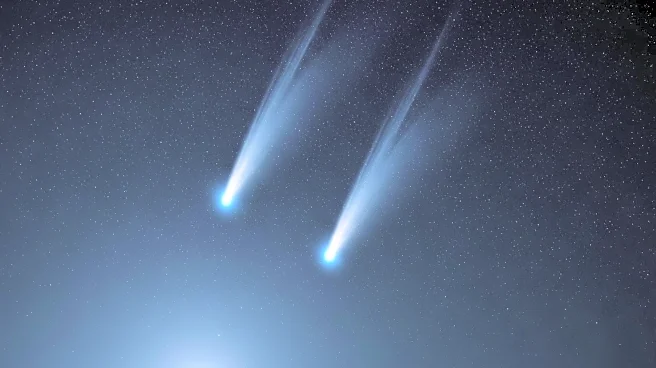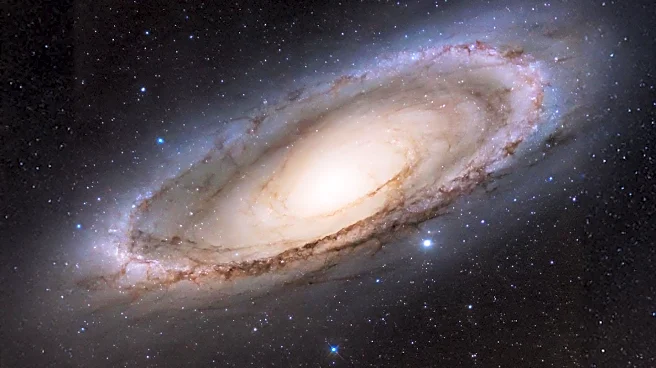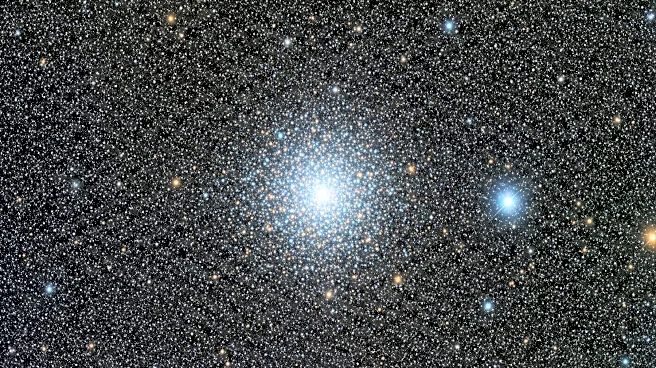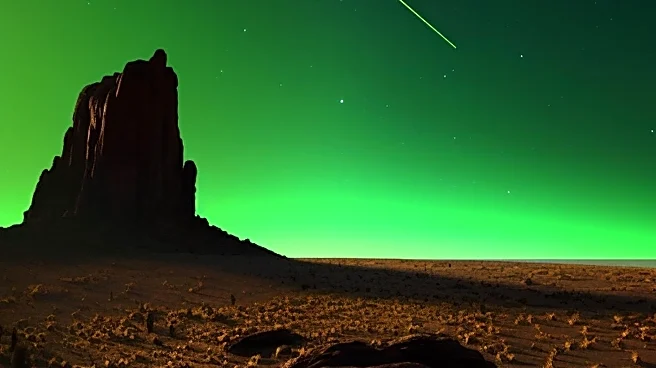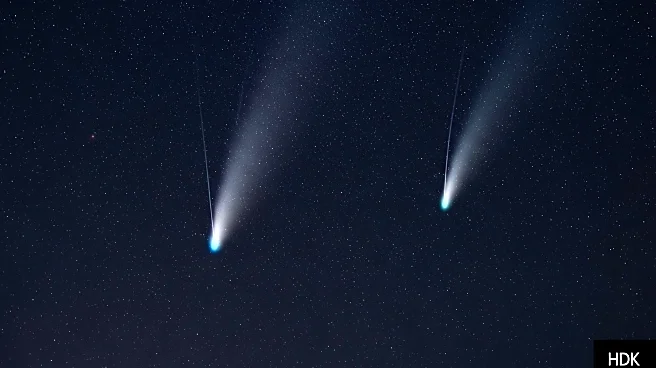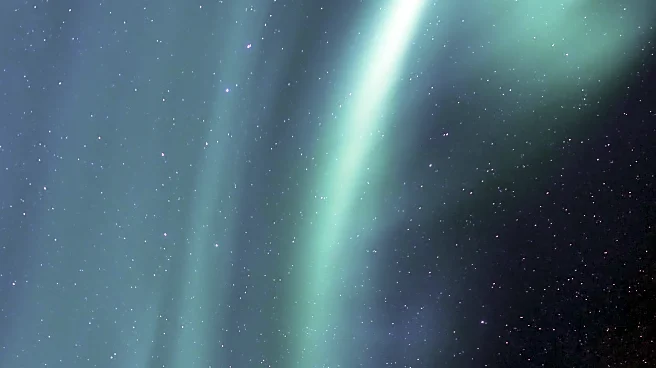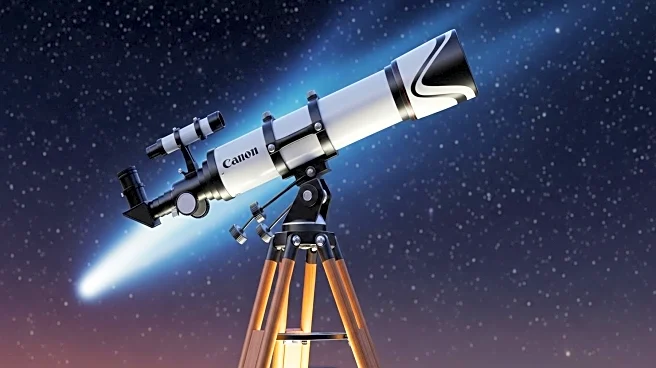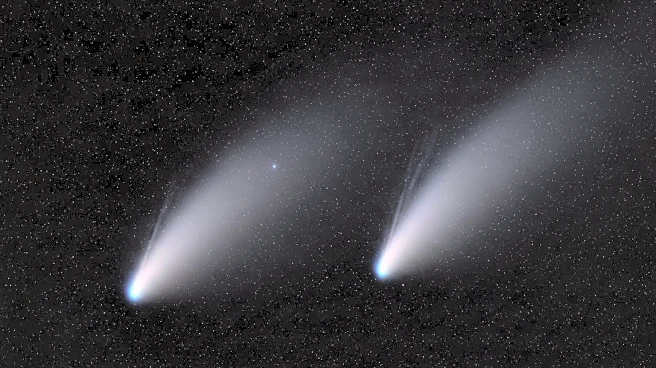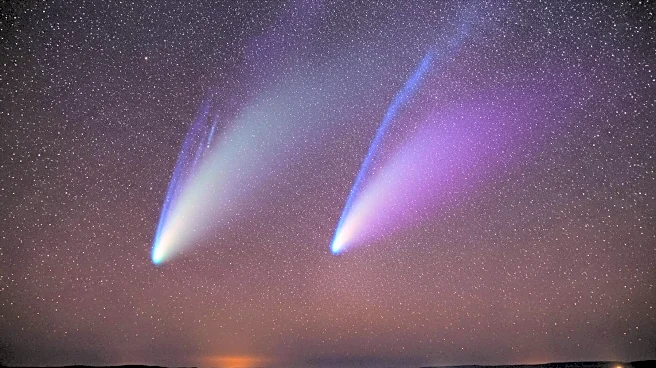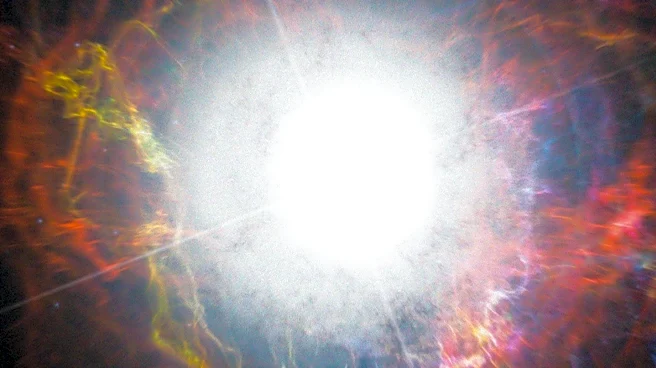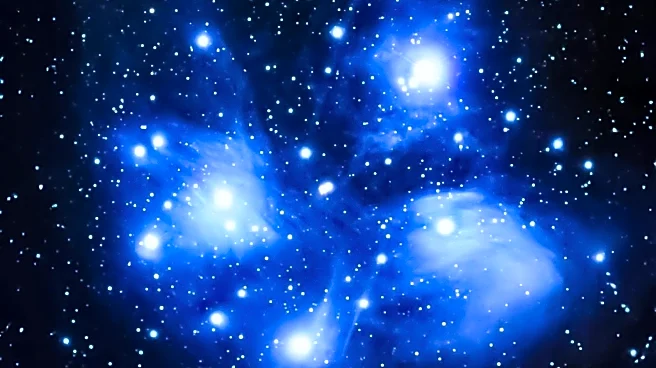What is the story about?
What's Happening?
Skywatchers are in for a treat this October with the appearance of two comets, C/2025 R2 (SWAN) and C/2025 A6 (Lemmon), both making their closest approach to Earth around October 21. These comets are best viewed with binoculars in the night sky, visible in the western and southern skies about 45 minutes after sunset. Comets are remnants from the early stages of our solar system, composed mostly of ice covered in dark organic material. The visibility of these comets presents a unique opportunity for observation and engagement with celestial phenomena.
Why It's Important?
The simultaneous appearance of two comets is a rare event that can significantly boost public interest in astronomy and skywatching. This could lead to increased sales of binoculars and telescopes, benefiting the astronomy equipment industry. Additionally, the event may inspire educational activities and public gatherings focused on observing the comets, fostering community engagement and promoting science education. The visibility of these comets also provides an opportunity for amateur astronomers to capture and share images, potentially increasing social media engagement and interest in space science.
What's Next?
As the comets approach their closest point to Earth, skywatchers are encouraged to take advantage of the opportunity to observe them. The visibility of the comets is expected to increase as they move through various constellations, providing an extended period for observation. This event may lead to increased interest in astronomy and skywatching, potentially influencing future educational programs and public outreach initiatives. The appearance of the comets could also inspire further research and exploration of celestial phenomena.
AI Generated Content
Do you find this article useful?
